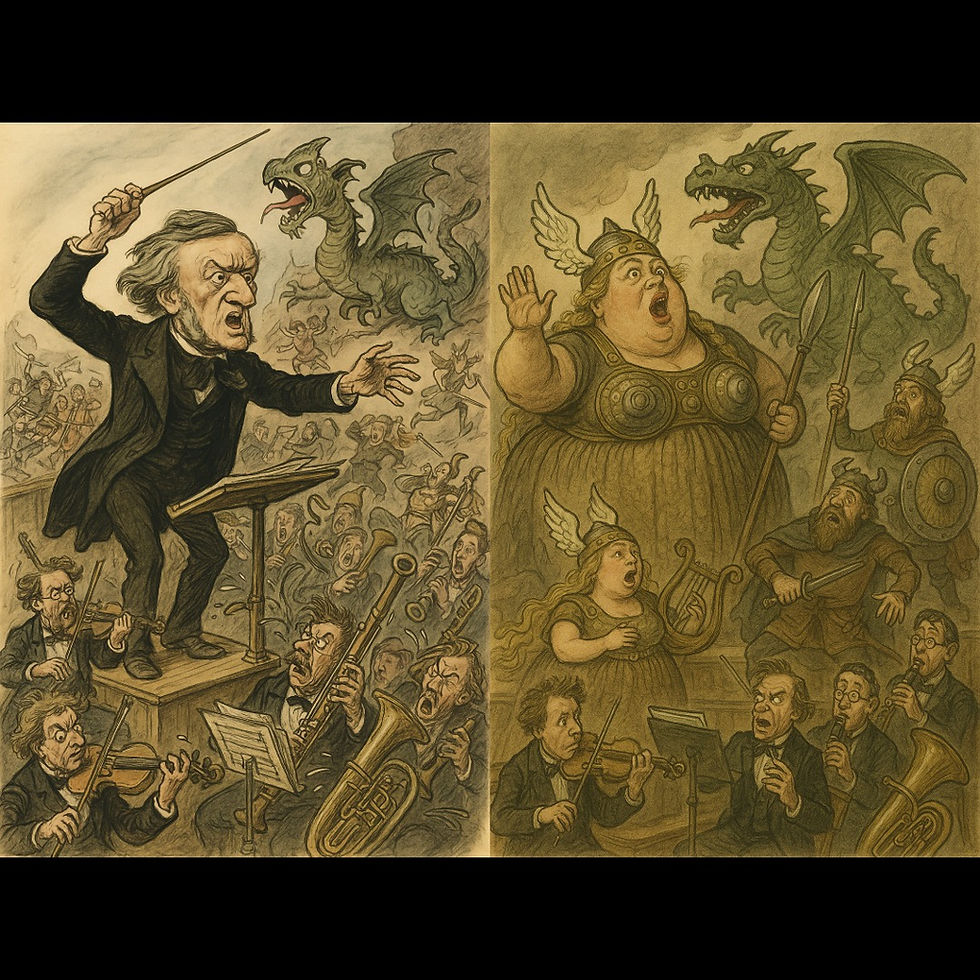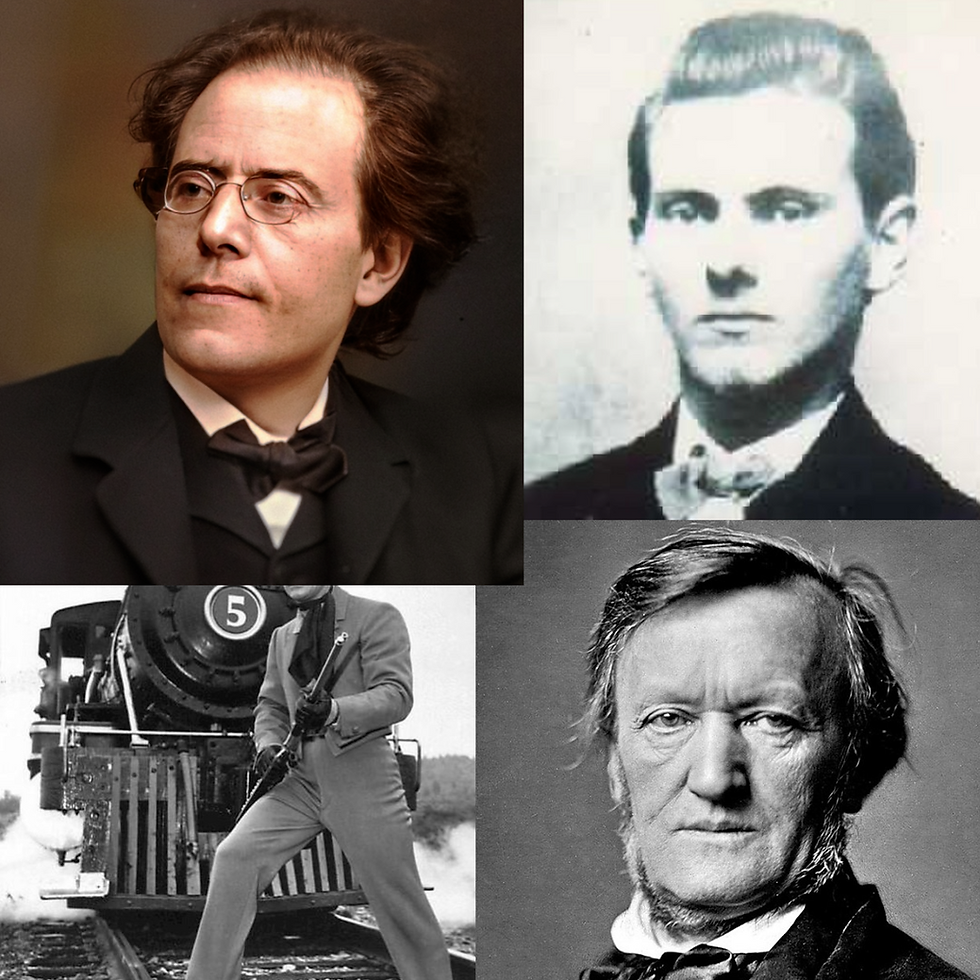Happy Birthday, Schumann!
- Jun 3
- 3 min read
Updated: Jul 10
Today, we celebrate the birth of the great composer, Robert Schumann. We will perform Schumann's 4th Symphony on March 21st in our third concert of the 2026 season, Germanfest. Tickets are now available for purchase on our website.

Join all of us at the Naples Community Orchestra in wishing German composer Robert Schumann a very happy 215th birthday! Born in Zwickau, Germany, on June 8, 1810, Schumann shifted from his dreams of becoming a concert pianist to earning acclaim as a composer after suffering a debilitating hand injury.
His passionate relationship with Clara Wieck—a marriage resisted by Clara's father (who was also Robert's piano teacher!)—became a profound source of inspiration for much of his music. Schumann also struggled with mental health issues, including periods of depression, which significantly impacted his life and career.
Despite his recurring bouts of melancholy and other health challenges, Schumann was remarkably prolific. He composed over 150 works across many genres, including piano music, orchestral pieces, and more than 250 songs (lieder). He was also a distinguished music critic.
However, one of the most interesting facts about Schumann is that he is one of the 13 composers featured in the Naples Community Orchestra’s 2026 season: An International Feast! We will be performing Schumann's 4th Symphony at our Germanfest Concert on March 21st. He and others like Mozart, Mendelssohn, and Verdi will make it a season like none other.
Be sure to visit the Naples Community Orchestra website early and often for more details, tickets, and season passes. |
Schumann: Did You Know?
Schumann's childhood was filled with books, sparking a love for both literature and music. He took piano, flute, and cello lessons. He even began composing at a young age.
In an attempt to strengthen his fingers, Schumann devised a contraption that tied weights to his fingers. Unfortunately, this experiment backfired, permanently injuring his hand and ending his hopes of a concert career.
Schumann was among the first composers to utilize the leitmotif technique. He assigned specific meanings or characters to certain musical motifs.
In the 1840s, Robert suffered from depression and auditory hallucinations, likely caused by tinnitus. He experienced constant ringing in his ears and acute anxiety, worrying about being poisoned by metal objects.
Schumann created contrasting alter egos, “Florestan” and “Eusebius,” to represent different sides of his personality. One was impulsive and passionate, while the other was dreamy and introspective. He used these personas in his music and writings as a critic, sometimes signing works with "F." or "E." to indicate which persona was composing.
After his attempted suicide, Schumann was sent to a mental asylum in Endenich. He spent the last two and a half years of his life there, dying on July 29, 1856, at the age of 46.
Visit the Naples Community Orchestra website early and often for details, tickets, and season passes.
Why Not Just Practice More?
Schumann wasn't the only one searching for ways to improve piano technique. Throughout the 19th century, many inventors and piano teachers developed devices to enhance finger strength, independence, and hand position for pianists. These devices, marketed to both amateurs and professionals, reflected the era’s fascination with virtuosity and technical perfection.

Chiroplast
Invented by John Bernard Logier in 1814, the Chiroplast was designed to guide hands and fingers into the correct position over the keyboard. It aimed to prevent bad habits and encourage proper technique. It was widely used in England, India, and Germany, endorsed by prominent musicians of the time.
Dactylion
Developed by Henri Herz in 1836, the Dactylion featured rings for each finger that attached to adjustable springs. Pianists placed their fingers in the rings, which provided resistance to strengthen their fingers and improve independence.
Digitorium
This device had weighted keys that adjusted for resistance. It allowed pianists to strengthen their fingers through repetitive pressing. Some versions also included wedges to stretch the fingers. Myer Marks invented the Digitorium, patenting it on November 23, 1866.
Hand-guide (Guide-mains)
Created by Friedrich Kalkbrenner in the 1810s, this device was a bar placed above the keyboard to maintain wrist elevation. It restricted unnecessary arm movement, forcing the pianist to rely on finger strength. It gained popularity in Paris and was used by teachers such as Kalkbrenner and even a young Franz Liszt.
Chirogymnast
Developed in 1840, the Chirogymnast was a portable frame with components to train finger independence and flexibility. It allowed each finger to move freely and stretch further apart to achieve technical progress more quickly.
Join Us in 2026 for Another Great Season of Classical Music!
We have four fantastic concerts planned for 2026. Join the NCO Family and enjoy "The NCO Experience" next season!












Comments